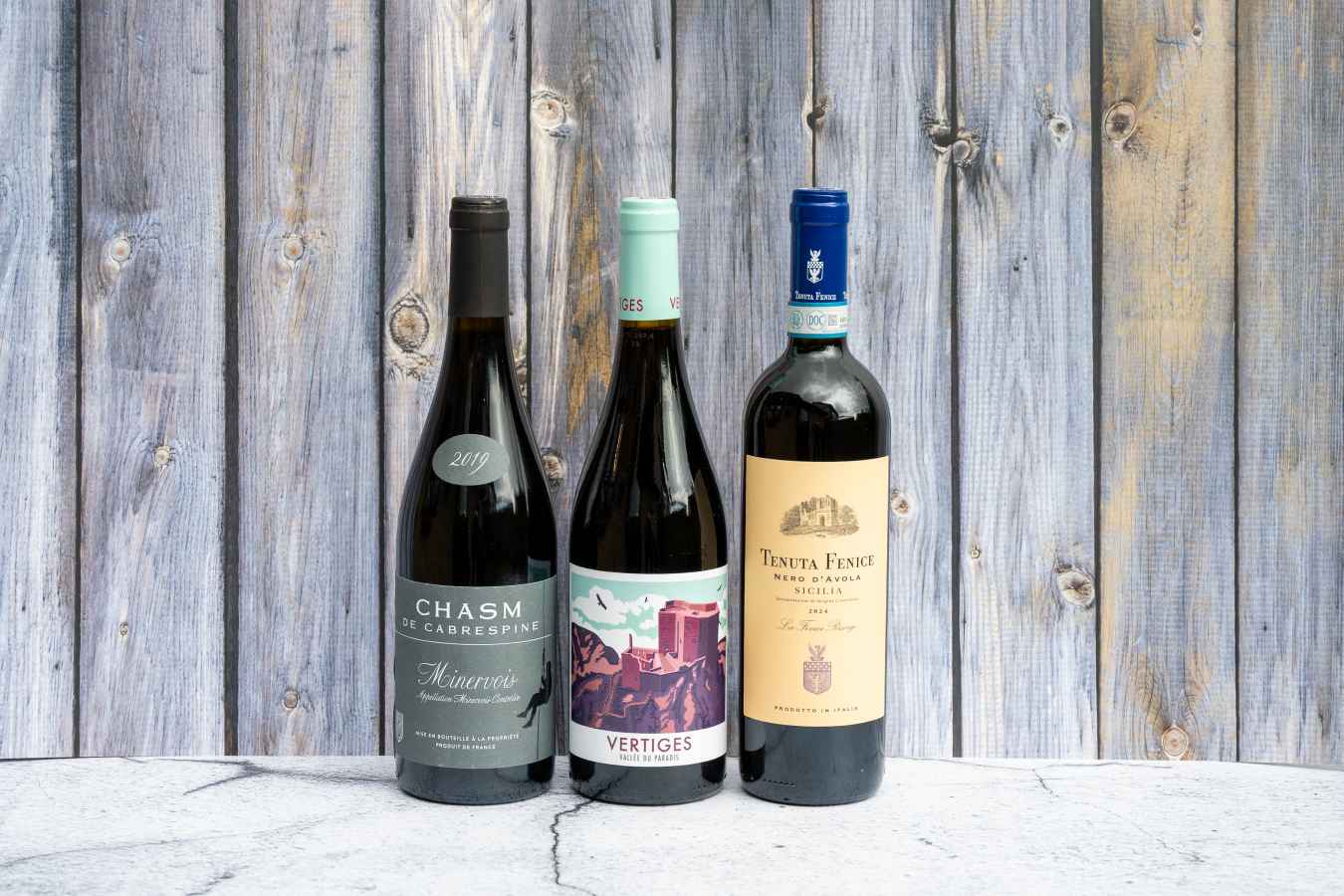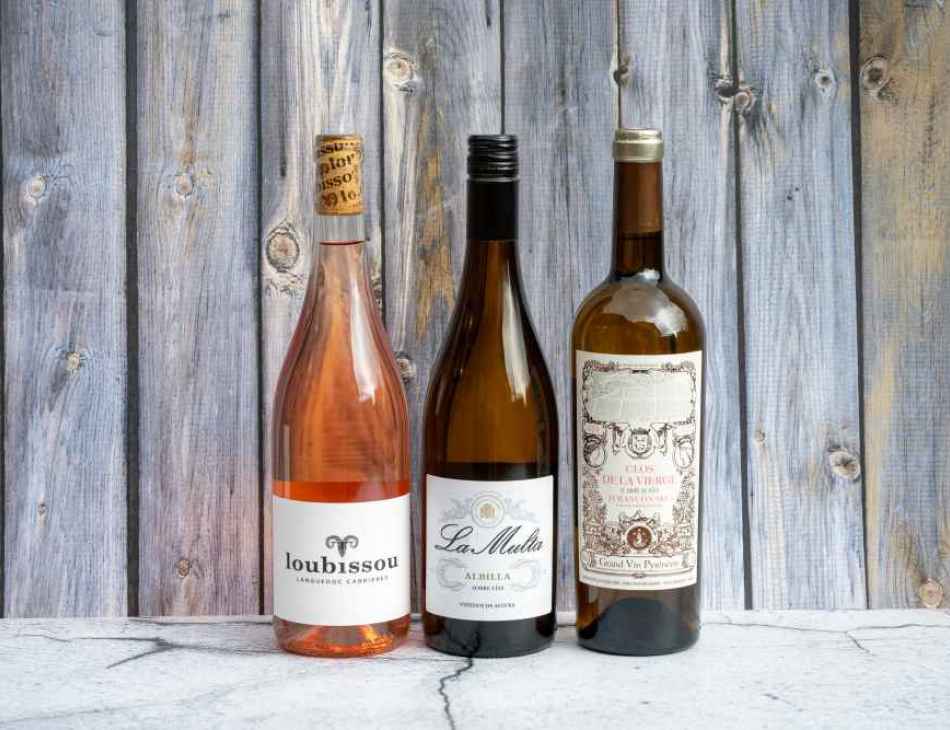David's Drink Diaries - Issue 28
Loubissou, La Multa and Clos de la Vierge
One of the things I love most about wine is how it refuses to sit still. Just when you think you’ve seen it all, along comes a bottle that’s been resting in a river two hundred metres underground, or a grape variety you thought had vanished, suddenly shining again in a glass. In this issue I’ve been tasting wines with stories of rescue and resilience, growers saving old vines from the axe, families bringing abandoned plots back to life, and cooperatives keeping traditions alive against the odds. They’re reminders that wine is never just about flavour. It’s about the people who decide that some things are worth the hard work of saving.
Chasm de Cabrespine 2019 pushes the concept of cellaring to its limits, quite literally. Instead of resting in a traditional cellar, the wine has been matured deep underground in a subterranean river, two hundred metres below the surface of the Languedoc. Bottles are lowered by rope pulley and hand through narrow ladders and passageways before being ferried by canoe into the darkness. For six years they remained there, untouched, in conditions of absolute stillness and perfect humidity. The blend is two-thirds Syrah, one-third Grenache, with some bunches whole-fermented for added lift. The result, according to Laithwaites’ Mark Hoddy, is brighter and more alive than its cellar-aged twin with blackberries and spice given uncommon vibrancy. It is a UK first, and quite possibly a world first, for this kind of “extreme cellaring.” (available here)
From Navarra comes Flor de San Martín Garnacha Blanca 2024, a white that combines history and freshness. More than a century ago, 192 growers in the region’s rugged highlands formed a cooperative to preserve their land and traditions. Today that cooperative remains at the heart of the region, producing wines that reflect its altitude and harsh climate. Winemaker Gonzalo Zelayeta selects small parcels of hand-harvested Garnacha Blanca grown on high, stony slopes at the edge of the Pyrenees. The wine is crisp and zesty, with the kind of lively acidity that makes it a natural companion for seafood. It is an understated reminder of how collective effort can sustain a wine culture across generations. (available here)
Over in Jurançon, the story is more intimate. Clos de la Vierge 2023 comes from a three-hectare vineyard tended by Anne-Marie and Christiane, two sisters now in their seventies. Their Gros Manseng vines are nearly as old as they are, producing fruit of remarkable concentration and clarity. Their mother, at ninety-five, still oversees the kitchen garden that borders the vineyard. The wine itself is generous yet precise, with the hallmark freshness of Gros Manseng and a fine length that makes it an ideal match for garlic chicken. (available here)
Rosé, too, can carry history. Loubissou Organic 2024 is from Cabrières, a once-forgotten cru of the Languedoc that has in recent years begun to attract attention again. The vineyard sits on ancient schist soils, long prized for producing wines of depth and minerality. When its owner retired, the vineyard risked being lost, but Laithwaites stepped in to buy the land and lease it to a young couple who tend vines nearby. The result is a wine that combines the elegance of organic farming with the character of Cabrières’ soils. It is also a reminder of how viticultural heritage can be preserved, not just by tradition but by active stewardship. (available here)
Not all vineyards are so fortunate. Wildfires in southern France have placed growers under severe strain. Yet resilience is evident in bottles like Vertiges 2024. The name means “fear of heights,” apt for a wine made from Grenache and Carignan harvested on vertiginous slopes beside Peyrepertuse Castle, 500 metres above sea level. Winemaker Benjamin Andrieu is undeterred by the terrain, crafting a red that is smooth and approachable, with just enough wild edge to evoke its mountain origins. (available here)
From nearby Corbières comes Charles Cros Grande Réserve 2023, produced by the Cave de Fabrezan cooperative. For over forty years, the cave has pursued the costly method of carbonic maceration for most of its reds, resulting in wines that are silky, fruit-filled and distinctly local in style. This particular cuvée, pure Syrah, has been made exclusively for Laithwaites and named after Fabrezan’s most celebrated figure, the poet and inventor Charles Cros. It emerges from a region directly affected by fire, and its very presence is an act of perseverance. (available here)
In Aragón, perseverance takes a different form. Norrel Robertson MW, known locally as El Escocés Volante, the flying Scotsman, has spent more than twenty years seeking out abandoned family vineyards in Calatayud’s rugged hillsides. His great passion is Garnacha, but he also champions rare native grapes at risk of vanishing. Albilla is one such white variety, delicate yet full of potential when grown on old, low-yielding vines. La Multa Albilla Sobre Lías 2023 captures its citrus precision, layered with a creamy roundness from four months on lees. At £14.99, it offers both freshness and depth, and stands as a testament to Robertson’s determination to rescue Spain’s forgotten viticultural treasures. (available here)
Italy offers stories of rescue, too. In Puglia, growers had planned to uproot old, low-yielding Negroamaro and Primitivo vines, deemed too unprofitable in the modern market. Angelo Maci, three times named Winemaker of the Year, persuaded them to keep faith. The result is Il Brutto Negroamaro Primitivo 2023. The name, meaning “ugly,” refers to the twisted, gnarled trunks of the vines, but in the glass the wine is anything but. Dense, rich, and deeply coloured, it is a tribute to the value of heritage vines in a world too ready to sacrifice them. (available here)
In Sicily, Tenuta Fenice Nero d’Avola 2024 carries its own legacy of renewal. The vineyard was abandoned after the 1968 earthquake, left to lie fallow for decades. Dino Taschetta, honouring his grandfather’s land, nursed the vines back to health and restored the estate. Today the Nero d’Avola is barrel-aged, dark with blackberry fruit and tinged with spice, giving it a wonderful richness. (available here)
Follow me on Instagram at winery_diaries











